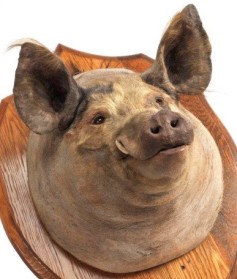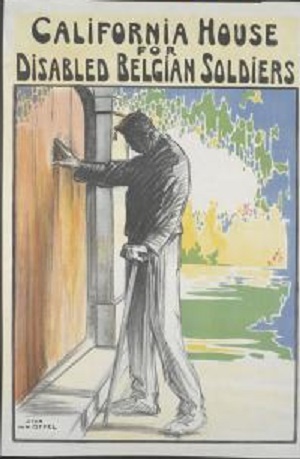
I have a smallish piece in the current issue of Uncut about the changes about to strike Denmark Street, known to Londoners as Tin Pan Alley and historically one of the most important streets in London for the music industry. It began as a place where sheet music was sold and soon attracted other aspects of the industry: publishers, managers, songwriters, shops selling instruments, studios. Its importance was such that both NME and Melody Maker started here, while in the 70s it was home to Hipgnosis, the design studio responsible for many of Pink Floyd and Led Zeppelin’s album covers.
The street’s heyday was the 1960s however, when musicians would shop for guitars in between visiting managers and publishers or recording in one of the studios, Regent Sound or Central Sound. The Rolling Stones and The Kinks came here, so did Donovan and Jimmy Page, Eric Clapton and Elton John, Jimi Hendrix and Jeff Beck. A popular dive was La Giocondo, a cafe/bar in which most members of the nascent R&B revolution visited at some point or other – David Bowie was said to practically live there.
In later years, the street declined in importance – although when Malcolm McLaren was looking for a rehearsal space for the Sex Pistols he was delighted to find room in Denmark Street, installing his upstarts in the heart of the traditional music industry like Greek soldiers inside the Trojan Horse. It was a pretty squalid space, but handy for Soho. Graffiti from their stay was recently rediscovered inside a cupboard.

The street continues to have a music association, mainly in the form of its many instrument shops but also through the 12 Bar Club. How long it can retain that heritage in the face of the rapacious demands of the London property market combined with the way we play and consume music, remains to be seen.
Denmark Street is located in St Giles, one of the last untameable parts of central London. This was the location of Hogarth’s splenetic Gin Lane and would later be one of Victorian London’s biggest rookeries. It remained a troubled place throughout the 20th century, a centre of homelessness through which you would regularly see zombie armies of smackheads marching in bedraggled fashion in search of a score. To some, like Owen Hatherley or Robert Elms, its shabbiness is appealing, and I certainly enjoy its timewarp feel.
But that is over. The accursed Centre Point, one of the most soulless pieces of architecture in London, is being developed into luxury flats, while nearby is Renzo Piano’s lurid Central St Giles development – that’s those blocks painted in hideous Balamory primary colours. The driver here is the new Crossrail station at Tottenham Court Road, which has released a flood of development money into the area, washing clean the grime of history. London is now getting too big, too rich, to allow anomalies like St Giles to continue to exist.

The important scheme in terms of Tin Pan Alley is by Consolidated Development. They are building a mixed-use block on St Giles High Street with the slightly bizarre title of the OuterNet. It promises, among other things, to revolutionise the way we shop. This development will back on to Denmark Place – the alley just north of Denmark Street – resulting in the destruction of some buildings there, as well as one building on the north side of Denmark Street itself. This is to create pedestrian access for the huge flows of people expected to use the new Crossrail station.
At the same time, and starting later this year, properties along the south side of Denmark Street will be refurbished following those on the north. That includes the 12 Bar, which is, I was told, close to collapse. Campaigners fear this will spell the end of Denmark Street as we know it, with rents rising and traditional retailers – the ones selling drums and guitars – forced out. To stop this happening, they want to make Denmark Street a conservation area, limiting use for any incoming shops in the same way Hatton Garden is for jewellery.

When I spoke to Lawrence Kirschel, the owner of Consolidated Development, he was desperate to assure me that he wants Denmark Street to retain its link to the music industry – indeed, he wants to enhance it by building a new venue, installing a rock hall of fame in the form of statues of Tin Pan Alley-associated musicans along Denmark Place, and offering any vacant shops to ‘music-related’ enterprises. He sees the music heritage as the key selling point for the whole enterprise, a way to drive tourists to the OuterNet’s shops and bars.
Kirschel seems genuine, but developers often do. He points out, reasonably, that he has owned Denmark Street for 20 years, and could have kicked out the instrument shops at any point in the past few decades if he was so inclined. The refurbishment, he said, is something he had put off for years but was now necessary as many of the buildings were in a poor state of repair, something reflected by the rents they currently pay.
Although Kirschel wants to retain Tin Pan Alley, he was less keen on the idea of a conservation area being imposed (what landlord would?) arguing that “any restriction on use is the dilution of creativity”. However, he also admitted that “developments usually mean sterility”. Somehow, he has to straddle this narrow line, and create something new that doesn’t kill the spirit of the old.
It’s a challenge, and one that is rarely met successfully however well-intentioned the developers may be – and assuming they are not just paying lip service to the notion of tradition or have a very different interpretation of it. Kirschel’s line is that he wants to bring the music industry itself back to Denmark Street so Tin Pan Alley is more than just instrument shops. Part of his scheme features short-stay apartments, which will be aimed at touring musicians.
He knows getting the industry to co-operate will be difficult. Kirschel is a previous owner of the Marquee Club on Wardour Street, now a Conran restaurant. He says he tried to keep it going but got no support from the music industry. If the industry wants to keep something alive, he says, they need to back him. Whether the music industry has any will to do so is another matter.

Part of the problem is that the music industry is now so fragmented. Independent labels can’t afford to function in central London – many can’t afford to be in London at all – while the major labels brood out west, thinking up new ways to flog back catalogues to deep-pocketed ageing musos. With Crossrail causing the demolition of the Astoria, there are few venues left in Soho – Kirschel says his will be the first to open there since the war – and much of what the industry used to offer – everything from recording an album to releasing one – can now be done at home via the net
So what would really keep Denmark Street? A musician friend who occasionally shops on Denmark Street thinks the instrument shops need to become more specialised, more discerning – when he was trying to purchase a pedal steel recently, there was only one for sale on the entire street. Maybe more people would visit Denmark Street if they know their more obscure requirements will be serviced. He also suggested the installment of cheap rehearsal space as a way of drawing genuine musicians to the area – although I’m not sure whether a bunch of sweaty indie kids is the clientele Kirschel is hoping to attract. As it is, if the plan requires the help of the music industry for it to work, I’m not optimistic.








